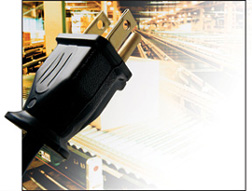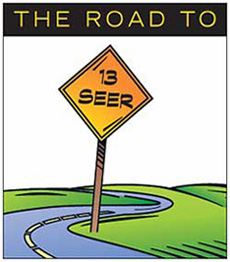
However, 10-SEER and 12-SEER units can be sold indefinitely after Jan. 23 - as long as they were manufactured before that date. With that in mind, the suppliers who sell coils, motors, valves, and related items have been trying to guess what their OEM customers will want this year. Compressor makers are also dealing with current model needs while preparing for 2006.
According to some manufacturers, stockpiling of sub-13-SEER equipment seems likely because of the cost and the increased size of 13-or-higher-SEER units compared to lower-SEER equipment. The minimum efficiency since 1992 has been 10 SEER.

Buildup Of 10-SEER Equipment
Many will build an inventory of 10-SEER equipment this year for later demand from builders and contractors, predicted W.J. (Bill) Merritt, vice president North America sales/marketing, Tecumseh Compressor Co. Other component suppliers acknowledge that probability.They all face the question of when to stop or slow production of items best suited for sub-13 systems and switch the emphasis to 13-plus needs. Suppliers' design teams are working hard to develop components to meet emerging OEM needs as the system manufacturers themselves make the transition.
Component makers face a double whammy of increased manufacturing costs using more metal and the unprecedented rise in steel, copper, and aluminum that took place in 2004. Almost everything these manufacturers supply to the OEMs is comprised mostly of one or more of those metals.
Sid Ambort, vice president, sales and marketing for Emerson Climate Technologies HVACR motors, said those three elements make up 50 to 60 percent of the cost of a motor. "Steel has gone up by 80 to 90 percent, copper by 70 to 80 percent, and aluminum by 30 to 35 percent," he said. "We've announced three price increases totaling just over 20 percent in 2004. That's right in line with what the whole motor industry has done."
Margins Squeezed
Comparing those figures suggests that motor manufacturers are getting squeezed on their margins. A.O. Smith spokesman Terry Glass, manager of strategic programs for that motor maker, said more efficient motors generally require more steel and copper, plus more electronics to enhance performance characteristics. The electronics add to the cost."When it reaches the consumer, the unit cost isn't going to be 20 or 30 percent higher (reflecting the efficiency difference between 10 and 13 SEER systems); it's probably going to be worse," Glass said. Others have speculated that 13-SEER equipment will cost at least 50 percent more than same-capacity 10-SEER systems.
Sub-13 equipment will cost more as well simply because of those metal price increases, Glass pointed out.
His company offers "Comfort Select" brushless DC motors with electronic control and a choice of five preprogrammed speeds. A.O. Smith says its ECM motor offers infinite variable-speed operation within the load and speed limits of the motor, to "deliver the constant cfm needed for total household comfort and enhanced energy efficiency."
A.O. Smith is specifically addressing the 13 SEER deadline with an approach called CoolBLUE Solutions, involving "innovative motors and electronics" to optimize system efficiency and also deliver more consistent comfort and greater energy savings.
The company also offers prepackaged airflow systems with "innovative motor-blower modules" that can be adjusted or tuned to move the correct amount of air through the system.
Publication date: 02/14/2005

Report Abusive Comment